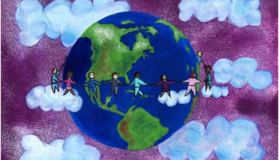Barriers
上一节
下一节
Intercultual communication barriers
1. Ethnocentrism
Ethnocentrism refers to negatively judging aspects of another culture by the standards of one's own culture. e.g. My culture should be the role model for other cultures.
Other people are much the same as my people.
I don't cooperate with peole who are different.
2. Steretyping
The term is more broadly used to refer to negative or positive judgments made about individuals based on any observable or believed group membership.
3. Prejudice
Pejudice refers to the irrational dislike, suspicon, or hatred of a particular group. race, religion or sexual orientation.
4. Racism
Racism is a speical type of prejudice based on race.


